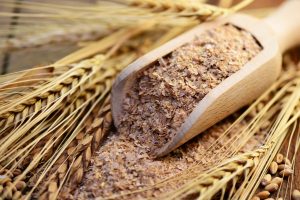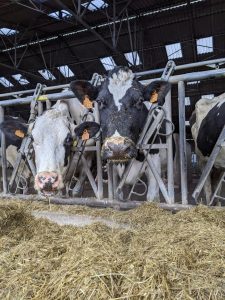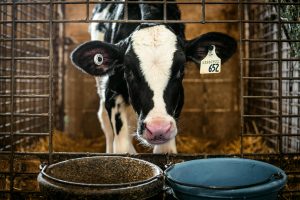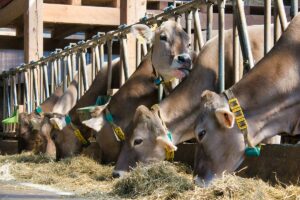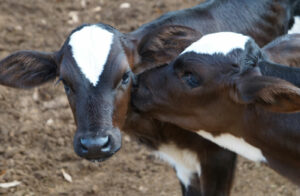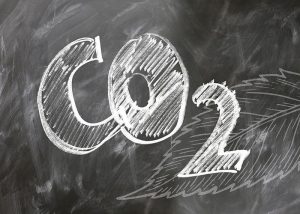Álvaro García
Cattle around the world share a highly similar genome, yet their performance can vary dramatically across regions. This discrepancy arises because productivity depends not only on genetic potential but also on the interaction with the environment. Among environmental factors, forage and feed resources are as influential as climate. Imported breeds often fail to reach their potential when nourished on local plants, while indigenous breeds thrive on them but yield modestly. The most sustainable solution lies in aligning cattle genetics with regional feed resources, often through crossbreeding.
Brazil: Holstein, Gyr, and the rise of the Girolando
Brazil is one of the world’s largest dairy producers, but its production environment differs fundamentally from the temperate regions where most high-yield dairy breeds were developed. In Brazilian dairy regions, cattle feed primarily on tropical grasses such as Brachiaria and Napier (Pennisetum purpureum). These grasses are highly adapted to heat, seasonal rainfall variation, and drought, making them reliable forage sources under tropical conditions. However, their nutritive profile presents challenges for high-yielding cattle: they are characterized by high fiber fractions, including neutral detergent fiber (NDF) levels often exceeding 65%, and acid detergent fiber (ADF) above 35%. Crude protein is modest (7–12% of dry matter in Brachiaria) and digestibility typically ranges from 50 to 60%. This contrasts with temperate forages such as ryegrass (Lolium perenne) or alfalfa (Medicago sativa), which routinely offer crude protein values above 18% and digestibility levels of 70–80%.
When Holstein cattle (Bos taurus), globally recognized for their exceptional milk yield, were imported to Brazil, they encountered a fundamental mismatch between their genetic potential and the available feed base. Selected for decades under intensive systems supported by energy-rich silages and concentrates, Holsteins struggled to sustain high milk output on fibrous tropical grasses. In practice, their average lactation yield in pasture-based Brazilian systems fell to 3,500–5,000 liters, far below the 9,000–12,000 liters achieved in North America or Europe. To achieve higher production, producers had to supply costly energy supplements (maize or soybean meal) and invest in cooling facilities, as Holsteins are also highly susceptible to heat stress.
In contrast, the Gyr breed (Bos indicus), introduced from India in the early 20th century, displayed an entirely different response. Adapted to elevated temperatures, parasites, and low-quality forage, Gyr cows efficiently digested fibrous tropical grasses and maintained fertility under conditions that compromised Holsteins. However, their milk yield was low, averaging only 800–1,500 liters per lactation. Thus, while Gyr cattle thrived in terms of adaptation and resilience, they could not provide the volumes of milk required by Brazil’s expanding dairy market.
The solution emerged through systematic crossbreeding. By combining the milk production potential of Holsteins with the adaptive traits of Gyr cattle, Brazilian researchers and breeders created the Girolando. The breed typically carries a genetic composition of 5/8 Holstein and 3/8 Gyr, though different fractions are used depending on the production environment. Girolando cattle are now the cornerstone of Brazilian dairy farming, producing between 4,500 and 7,000 liters per lactation under forage-based systems, with better fertility and survivability than Holsteins and more milk than Gyr.
The rise of the Girolando reflects a broader principle: genetic improvement succeeds when aligned with feed resources as well as climate. On the fibrous, lower-protein tropical grasses of Brazil, pure Holsteins cannot fully express their potential, while pure Gyr lack sufficient output. Crossbreeding produces animals capable of extracting nutrients from tropical forages efficiently while maintaining economically viable levels of milk production. Today, it is estimated that more than 80% of Brazilian milk comes from Girolando herds, a testament to the breed’s fit with the country’s forage environment.
East Africa: Friesians and crossbreds on crop residues
In East Africa, feeding systems depend less on pastures and more on agricultural byproducts. Maize stover, sorghum stalks, and banana leaves form the staple cattle diet, with limited use of concentrates. These feeds are bulky, fibrous, and protein-deficient relative to the maize silage and formulated rations used in Europe.
Imported Friesians, genetically selected for high production under energy-dense diets, proved unsuited to these feed resources. Instead of producing 30–40 liters per day as in Europe, they averaged only 8–12 liters per day, while also struggling with heat stress and tick-borne diseases.
Local Zebus could maintain themselves on crop residues with little input, yet their production rarely exceeded 3 liters per day. Crossbreeding offered a solution: Friesian × Zebu animals produced 6–15 liters daily, while coping with fibrous residues, heat, and parasites more effectively than pure Friesians.
A global pattern
Brazil and East Africa, though different in ecology, show the same principle: imported high-yielding breeds are mismatched to regional feed resources, while indigenous cattle are adapted but less productive. Crossbreeds bridge the gap, combining acceptable milk yields with efficient use of fibrous tropical forages and crop residues.
This demonstrates that livestock performance is not solely a matter of climate adaptation. The nutritive characteristics of available forages and feeds, fiber content, digestibility, and nutrient profile, are equally decisive in determining whether cattle genetics can be fully expressed.
Conclusion and recommendations
The experiences of Brazil and East Africa show that forage resources, no less than climate, determine the success of dairy cattle genetics. Holsteins and Friesians, bred for temperate systems with energy-dense feeds, consistently underperform when confronted with fibrous tropical grasses or nutrient-poor crop residues. Indigenous Zebus, by contrast, survive and reproduce under these conditions but yield only modest amounts of milk. Crossbreeding between high-yielding Bos taurus breeds and adaptive Bos indicus lines has emerged as the most effective path forward. The Girolando in Brazil and Friesian–Zebu crosses in East Africa exemplify how blending productivity with adaptive traits creates animals that are both resilient and profitable under local feed conditions.
The broader lesson is both economic and ecological. Efforts to “force” imported cattle to perform through heavy supplementation, infrastructure, and veterinary support are costly, unsustainable, and often inaccessible to smallholders. Aligning cattle genetics with the feeds that dominate each region, however, builds systems that are self-reinforcing: cattle thrive on what is available, farmers lower their dependence on external inputs, and production remains viable even under climate stress.
Future strategies should therefore focus on genomic selection for adaptation traits—including tolerance to fibrous diets, heat stress, and endemic diseases—while conserving and utilizing indigenous genetic resources through structured crossbreeding. Progress will also depend on parallel investment in forages, improving the nutritive baseline with protein-rich legumes and enhanced Brachiaria cultivars. To succeed, breeding programs must remain farmer-centered, designed for systems that rely on crop residues and pasture rather than imported feed. Finally, policy frameworks must embed the principle of adapting genetics to feeds, avoiding dependence on unsupported imports of temperate breeds and fostering long-term strategies that integrate local environments, feed resources, and climate resilience.
The full list of references used in this article is available upon request.
© 2025 Dellait Knowledge Center. All Rights Reserved.



